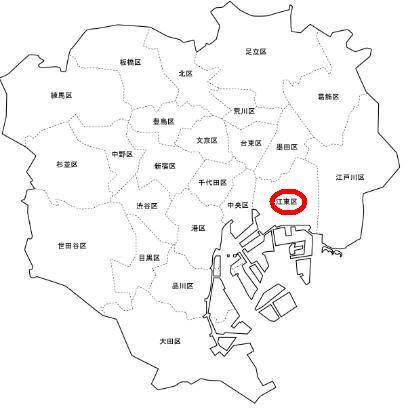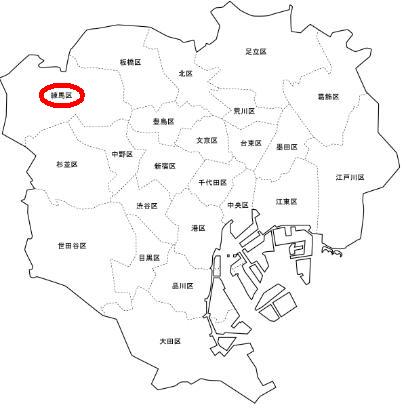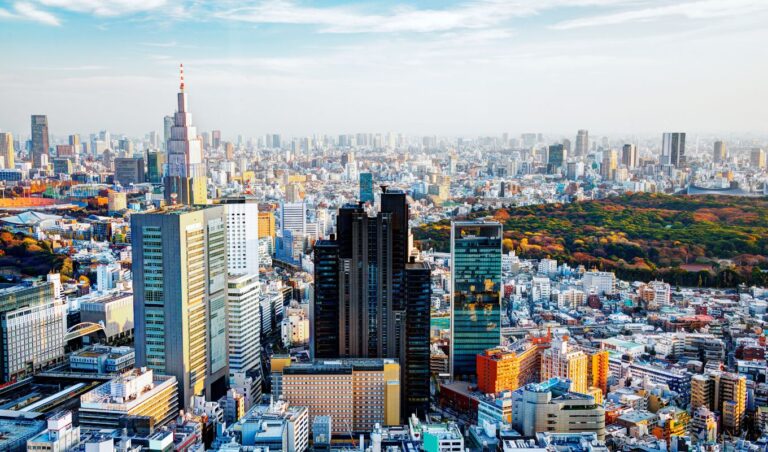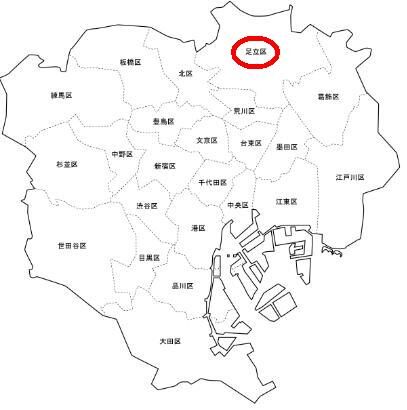
Koto City Sightseeing Spots
Koto-ku is located in the eastern part of Tokyo’s 23 wards, between the Sumida River and the Arakawa River, facing Tokyo Bay.
This area was reclaimed during the Edo period (1603-1868) and is the eastern edge of Edo, and the Fukagawa district (formerly Fukagawa Ward) is home to many temples and shrines, including Tomioka Hachiman Shrine.
The land area of the ward has long been a residential and industrial area, while Kameido Tenmangu Shrine in Kameido and the south side of Kinshicho Station have developed as entertainment areas.
The name Koto dates back to the Edo period (1603-1867), when it was used to refer to the Honjo and Fukagawa areas, and also to the eastern part of the Sumida River.
Tomioka Hachimangu Shrine
1-20-3 Tomioka, Koto-ku, Tokyo
Tomioka Hachimangu Shrine, famous for Fukagawa Hachiman Festival, is the largest Hachiman shrine in Tokyo. Inside Tomioka Hachiman-gu Shrine, there are monuments to yokozuna wrestlers, ozeki wrestlers, Kiba Kakunori, Fukagawa no Rikimochi, and a statue of Tadataka Ino.
Behind the shrine, there is the oldest iron bridge in Tokyo, Hachiman Bridge, and the ruins of Sanjusangendo Hall. Tomioka Hachiman Shrine, called Hachiman-sama of Fukagawa, is crowded with stalls along the approach to the shrine on the 1st, 15th and 28th of every month. temples and shrines
Kameido Tenjin Shrine

Famous for its carved wooden Japanese bullfinch, Kameido Tenjin Shrine is dedicated to Sugawara no Michizane, the god of learning. Kameido Shrine has been a famous place for its beautiful seasonal flowers since the Edo period.
You can enjoy about 200 red and white plum trees, Kameido’s five-foot wisteria, and chrysanthemums in autumn that decorate the front of the main shrine. The two drum bridges, Otoko-bashi (male bridge) and Onna-bashi (female bridge), are also tasteful.
Read more: Kameido Tenjin Shrine
Address: 3-6-1 Kameido, Koto-ku, Tokyo
Gas Museum
1-1, Toyosu 6-chome, Koto-ku, Tokyo
At the Gas Museum, you can learn and become familiar with energy from the perspectives of science and daily life. On Saturdays, Sundays, national holidays and school holidays such as summer and spring vacation, you can enjoy hands-on science and food programs, cooking classes, special events and seasonal events. botanical garden
Yumenoshima Tropical Botanical Garden
Yumenoshima Park, 3-2 Yumenoshima, Koto-ku, Tokyo
The Yumenoshima Tropical Botanical Garden is a facility that introduces the relationship between tropical plants and our daily lives. The large greenhouse is modeled after the environment of a tropical rainforest, where temperatures are high and rainfall is abundant, and uses the residual heat from the adjacent cleaning plant.
There is also a Dream’s He (a French-born educational toy in the shape of building blocks) where visitors can play with Capra, and a cafe where tropical fruit juice can be enjoyed.






